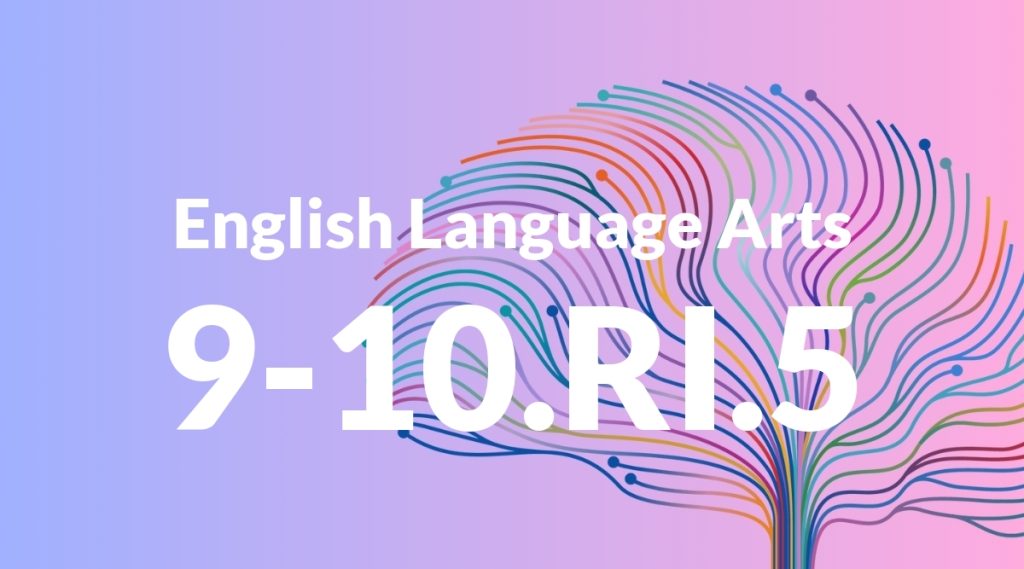Standard: 9-10.RI.5 – Analyze in detail how an author’s ideas or claims are developed and refined by particular sentences, paragraphs, or larger portions of a text (e.g., a section or chapter).
Grade level: Grade 9-10
Subject: English Language Arts
Domain: Reading: Informational Text
Teacher Overview
This standard requires students to analyze how an author’s ideas or claims are developed and refined by specific parts of a text. It is crucial for developing critical reading skills, as it helps students understand not just what an author is saying, but how they are saying it and why certain structural choices are made. Students should already be able to identify main ideas and supporting details, and recognize different text structures. This foundational knowledge is essential for understanding how specific parts of a text contribute to the development of the author’s ideas.
After mastering this standard, students will be able to critically evaluate the effectiveness of an author’s argument and use these skills to craft their own well-structured arguments in writing.
Common Misconception 1
One common misconception is that all parts of a text equally contribute to the author’s main idea. This is incorrect because certain sentences, paragraphs, or sections are more pivotal in developing and refining the author’s claims.
Intervention 1
To address this misconception, use graphic organizers to help students map out the structure of the text and identify key sentences and paragraphs that are crucial to the author’s argument.
Common Misconception 2
Another common misconception is that an author’s claims are static and do not evolve throughout the text. This is incorrect as authors often refine and develop their claims as the text progresses.
Intervention 2
To remediate this, use annotated readings to highlight how an author refines and develops their claims over the course of the text, showing the progression and changes.
Prerequisite Knowledge
Students should have a basic understanding of identifying main ideas and supporting details in a text, as well as familiarity with different text structures such as cause/effect, compare/contrast, and problem/solution.
Subsequent Knowledge
After mastering this standard, students will be able to critically evaluate the effectiveness of an author’s argument and use these skills to craft their own well-structured arguments in writing.
Instructional Activities
- Close reading exercises focusing on key paragraphs
- Group discussions analyzing the structure of informative texts
- Graphic organizers to map out text structure
- Annotated readings to track claim development
- Writing assignments that require students to mimic the text structure of analyzed works




